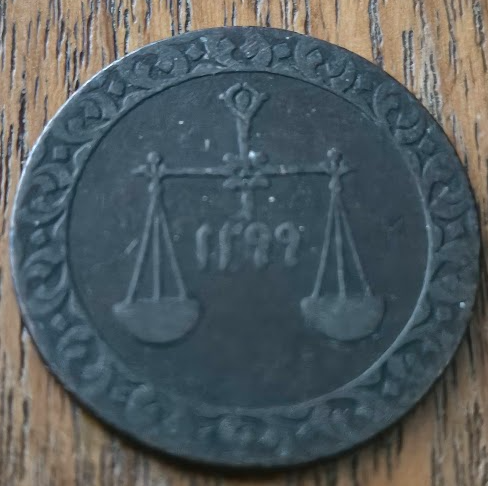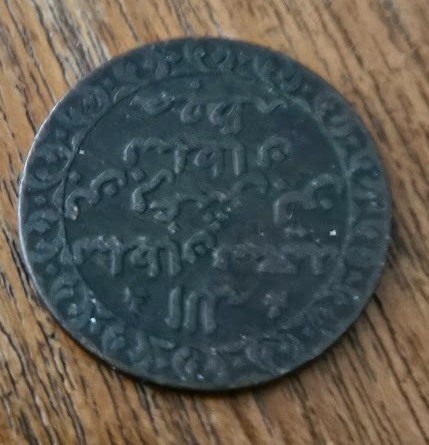What coin is this?
 rooksmith
Posts: 1,178 ✭✭✭✭
rooksmith
Posts: 1,178 ✭✭✭✭


“When you don't know what you're talking about, it's hard to know when you're finished.” - Tommy Smothers
0
 rooksmith
Posts: 1,178 ✭✭✭✭
rooksmith
Posts: 1,178 ✭✭✭✭


Comments
Your coin is a copper pysa from Zanzibar, a small island off the coast of East Africa that is now part of Tanzania (the "zan" in the name "Tanzania" comes from "Zanzibar"). The coin is dated "1299", but that's in the Islamic calendar, which converts to AD 1882. Your bottom picture is upside-down.
At the time the coin was issued, Zanzibar was a nominally independent sultanate under both British and German protection and a hub of a still-thriving slave market. The Germans handed over their rights to Zanzibar in exchange for the British giving back to Germany the small German island of Heligoland in 1890, and in 1896, the "shortest war in world history" was fought between Britain and Zanzibar, lasting all of 45 minutes before Zanzibar sued for peace, after which Zanzibar became a de-facto British protectorate and slavery was abolished.
Roman emperor Marcus Aurelius, "Meditations"
Apparently I have been awarded the DPOTD twice.
That response deserves another DPOTD, even though I'm not "authorized " to convey it. Nice post!
I second the Chelsea lover's nomination. I gave Sapyx his first DPOTD those so many years ago.
DPOTD-3
'Emancipate yourselves from mental slavery'
CU #3245 B.N.A. #428
Don
Thanks, I found it in a big box of old brass and copper coins that I bought from my coin dealer who called it old junk coins. I'm just starting to sort out some of the more interesting ones. Zanzibar. who knew. Thanks @Sapyx
I recently used the coin Collector's book to identify a Middle Eastern coin that I had with a clearly seen date of 1979. It was a foreign coin from some Arabic country, but it could not have been that year.
No such coin was made in 1979.
Then when I looked up samples from 1969 the image of the coin was a perfect match !
CONCLUSION : sometimes letters and numbers in a foreign language look different or don't translate, but my 1969 coin had what I certainly recognized as "1979 " for the date !!
Oh, I should add that the photos in the coin collectors' book showing that 1969 coin also clearly featured the numbers 1979 on their version of this coin also.
Yes, the Arabic numeral "6" does resemble the Western numeral "7", while Arabic numerals "1" and "9" look essentially the same as their Western counterparts. So a date that resembled "1979" written in Arabic would equate to "1969".
https://en.wikipedia.org/wiki/Eastern_Arabic_numerals
Learners of foreign languages call such things "false friends" - it looks familiar, so you instinctively treat it the same as what you are familiar with. Example: the word "also" in German looks like the English word "also", but has a different meaning and is pronounced quite differently; pronouncing it and using it "the English way" in a German sentence, or vice-versa, will merely confuse everybody.
Trivia time: Western numerals are sometimes called "Arabic numerals" (as opposed to "Roman numerals") by Westerners, because it was the Arabs who taught us how to use them back in the Middle Ages. Arabs themselves call their own numerals "Indian numerals", because it was the Indians in turn who had taught the Arabs how to use them. The Indians just call their own numerals "numerals", because they invented them thousands of years ago.
Roman emperor Marcus Aurelius, "Meditations"
Apparently I have been awarded the DPOTD twice.